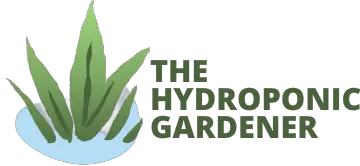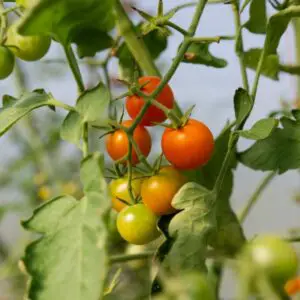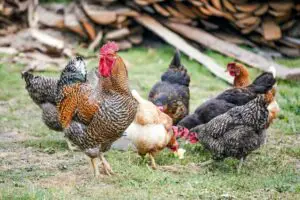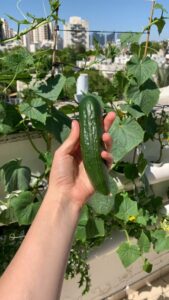If you’re like me, you love everything about tomatoes: their juicy texture, sweet and tangy flavor, and nutritional benefits. Cherry tomatoes are the smallest and most delicate type of tomato. They grow on a vine and are best picked when they are ripe.
Their small size, fast growth until ripe, their adaptability to various growing conditions, and their flavor make them one of the most popular and easiest vegetables to grow hydroponically.
In Short, That’s How to Grow Them:
- Temperature range: 65-77°F (18-25°C)
- Lighting: 8-10 hours of bright light daily
- Days until harvest: 55-75 days
- Recommended pH level: 5.5-6.5
- Indoors or outdoors? both work, more about it later in the article.
- Best system: NFT, but they all will do a good job.
The Nutrient Film Technique is the recommended system for growing cherry tomatoes due to its ability to provide a continuous supply of water and nutrients, optimal oxygenation of roots, efficient use of space, ease of maintenance, and high yield potential.
Indoors or outdoors?
As I wrote before, cherry tomatoes can be grown both indoors and outdoors, depending on your specific circumstances and preferences. Here are some considerations for each option:
Indoors:
- Growing cherry tomatoes indoors allows for year-round cultivation, regardless of outdoor weather conditions.
- Indoor growing provides more control over environmental factors such as temperature, humidity, and light, which can be optimized for plant growth.
- It’s essential to ensure adequate lighting, either through natural sunlight or grow lights, to support healthy growth and fruit production.
- Indoor growing may require additional space, equipment, and attention to detail, but it offers the convenience of easy access to fresh cherry tomatoes at any time.
If you are looking for a recommended system to grow it indoors, check out the Duesi system.
Outdoors:
- Outdoor growing is well-suited for cherry tomatoes, as they thrive in warm, sunny conditions.
- Outdoor plants benefit from natural sunlight, which provides essential energy for photosynthesis and encourages robust growth.
- Growing cherry tomatoes outdoors allows for larger plant sizes and potentially higher yields, as plants have more room to spread and access to natural pollinators.
- Outdoor cultivation may require less equipment and maintenance compared to indoor growing, as plants can benefit from natural rainfall and air circulation.
Ultimately, whether you choose to grow cherry tomatoes indoors, outdoors, or both depends on factors such as available space, climate, growing season, and personal preference. Both indoor and outdoor growing methods can be successful with proper care and attention to the needs of the plants.
Best Cherry Tomatoes For Hydroponics
When selecting the best cherry tomatoes for hydroponics, it’s important to consider the variety. Some varieties are better suited for this type of gardening than others. For example, Early Girl and Sweet 100 are popular among hydroponic gardeners because they grow quickly and produce an abundant harvest.
When it comes to cherry tomatoes, there is no shortage of varieties. From sweet and juicy Sungold to tangy Red cherries, dozens of varieties will grow well in a hydroponic system in your garden. Here are some of them.
Gardener’s Delight
You can’t go wrong with ‘Gardener’s Delight’ tomatoes. They average 28 grams and have up to 14 fruit per truss, but it isn’t as sweet as cherry tomato cultivars (Brix rating: 7). However, this doesn’t stop them from being a tasty treat!
Also Read: Algae Be Gone: Getting Rid of Algae in Your Hydroponic System
Tomato Suncherry Premium
The name says it all. These tomatoes are super fruit-filled, with an average weight of 20 grams and 31 per truss! Brix rating is 9.2, which means they’re juicy enough for your mouth to water just looking at them on the vine or in pictures.
No need to taste these delicious treats before you go ahead and pick some up (we wouldn’t want anyone leaving hungry). Good luck finding any other kind that can compare when there’s such beauty.
Tomato Sakura
The cherry tomato ‘Sakura’ is a large, fleshy variety with an average weight of 22.3 grams and a high Brix rating (8). Imagine your favorite cherry tomato, only more of it. The ‘Sakura’ is an impressive fruiting variety that weighs in at 22 grams on average.
It offers up to 165 fruits per truss! You can grow hydroponic tomatoes for beauties outside or within – they’re perfect for any greenhouse environment because their high mildness doesn’t require much warmth (only 8-10 degree difference).
Also Read: What Can You Use Instead of Hydroton? – 13 Clay Pebbles Alternatives
Tomato Cherrola
‘Cherrola’ is a beautiful, ornate fruit that’s long and wide. The plants produced an average of 157 ripe fruits per truss, weighing 0.04lb.
A 9 Brix rating means they’re almost sugar-free – perfect for your diet or as natural sweets without all those pesky extras found elsewhere on store shelves today.”
Tomato Sun Baby
The ‘Sun Baby’ tomato is a heavy cropper with bright, beautiful fruits. They average 1″ (3cm) in diameter and can weigh up to 0.03lb each.
The skin of this variety has just enough sweetness mixed into its acidic fruit flavor, making it perfect for indoors or outside during warmer months when grown under glass.
Tomato Aper
If you want a rich red fruit with an excellent sweet flavor, look no further than the Apero. The rich-red ‘Apero’ cherry tomato plant pots are best grown in a cold greenhouse or tunnel and have an average of 135 ripe fruits per plant.
Each fruit weighs around 0.03lb and has a medium-high sugar content of 9 according to Brix rating! These delicious treats also resist virus problems like plant roots-knot eelworms, making them perfect for your garden this season.
Tomato Rosad
The fruit of this tomato plant is more plump and round than a cherry-shaped one. On average, 143 shiny, bright red fruits were produced on each plant with 24 trusses weighing 0.02 each.
With an incredible Brix rating of 10+, it’s not hard to see why these are considered by many as among the best-tasting tomatoes ever grown.
Tomato Favorit
The bright and shiny” “Favorit” tomato is the perfect choice for those who want a good yield of fruit with an attractive shape. This disease-resistant variety can grow outdoors, in cold greenhouses or tunnels-it’s naturally resilient to leaf mold!
There are 123 fruits per truss, each weighing 0.04lb on average. Brix rated this hybrid high (8.8) because its sweet flavor was noted by all testers as well–notably more so than other varieties tested at our competition last year.
Tomato Sungold
The fruit of this plant is small but disease-resistant. With an average weight of around 13 grams and a round shape, it can withstand diseases that normally kill most plants, including wilt or mosaic virus infection (which usually results in splitting).
Each truss produced about 120 tomatoes, with 22 being bright orange-colored flavors. And their flavor is unusual for tomatoes; these little fruits have strong hints of orange that give way to sweet flavors with high Brix ratings (9).
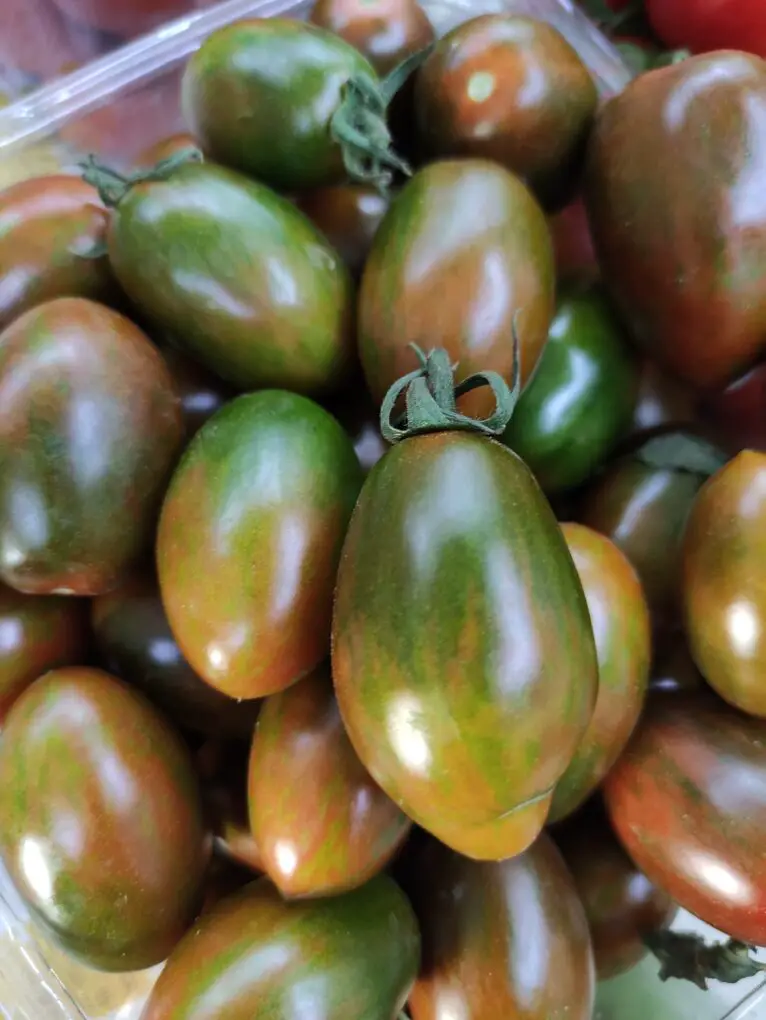
Black Cherry Tomato
The black cherry tomato is one of the most unique and delicious varieties of cherry tomatoes. This plump, juicy fruit is shaped like a round teardrop and has a decadent chocolatey-red color with deep green stripes, coloring them black.
These tomatoes are about 1.5″, but there are larger varieties that are twice as large. They are great for gardeners who enjoy unique plants that are not grown often at home.
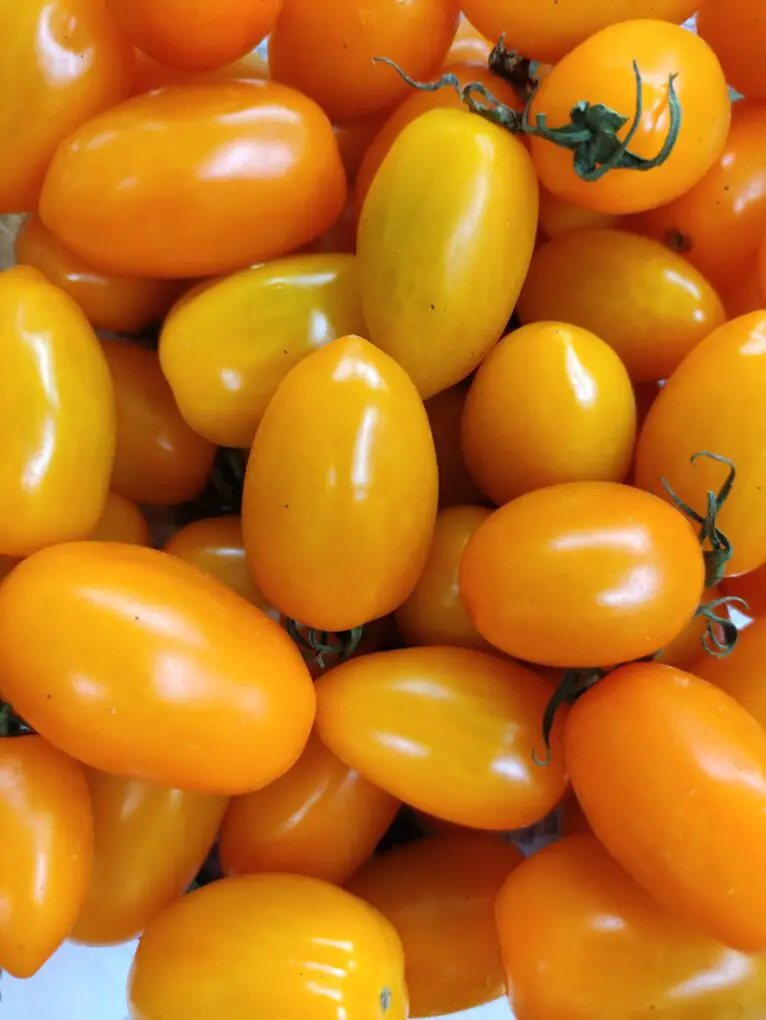
Yellow Cherry Tomato
The yellow cherry tomato is a beautiful, flavorful variety of cherry tomatoes. These round and plump fruits have a deliciously tangy flavor with just the right amount of acidity, making them perfect for snacking or adding to salads and other dishes. They are of normal size – around 1″ but are, too, unique and are not grown often by home growers.
Can Cherry Tomatoes Grow In Water?
Yes, cherry tomatoes can grow in water. However, it’s important to note that the plants will require adequate sunlight and nutrients for a successful crop. To grow cherry tomatoes in water, you’ll need to start with healthy tomato seedlings or cuttings from an existing plant.
Please place them in a container filled with nutrient-enriched water and in an area with plenty of sunlight. Make sure to change the water frequently and top up with more nutrient-rich water as needed. With the right conditions, you should have a plentiful harvest of cherry tomatoes in no time!
Additionally, it’s important to note that due to the shallow root structure of cherry tomatoes, they are more sensitive to changes in humidity and temperature than other types of tomato plants. Therefore, monitoring the water closely and adjusting as needed may be necessary to ensure proper growth.
How Long Does It Take To Grow Cherry Tomatoes Hydroponically?
Growing cherry tomato plants hydroponically is an enjoyable and rewarding endeavor that can bring fresh, delicious produce to your kitchen. Generally speaking, you can expect a full 8-12 week cycle from cherry tomato seeds to harvest when growing tomatoes hydroponically.
Conclusion
Cherry tomatoes are a delicious and healthy addition to any meal. They can be easily grown at home using hydroponic technology, making them an environmentally friendly option for reducing their carbon footprint. With a little care and attention, your cherry tomato plants will provide abundant fresh fruit to enjoy all season long.
FAQ
Hydroponic cherry tomatoes offer a wide variety of benefits, from improved flavor and nutrition to convenience and reduced cultivation costs. They are packed with nutrients and also easy to grow in a hydroponic system, requiring little maintenance or care.
To start growing cherry tomatoes hydroponically, you will need a hydroponic system. This can be something as simple as using buckets or containers, or it can be more complex with specialized lighting and nutrient delivery systems. Other key pieces of equipment for growing cherry tomatoes hydroponically may include an air pump, pH test strips or meter, nutrient additives, and growing mediums such as rockwool or coconut coir.
There are many different methods for growing hydroponic cherry tomatoes, including top-feeding systems that utilize a drip irrigation system, deep water culture (DWC) systems that submerge the roots in nutrient-rich water, and nutrient film technique (NFT) systems that use a thin film of moving water to deliver nutrients to the plants.
